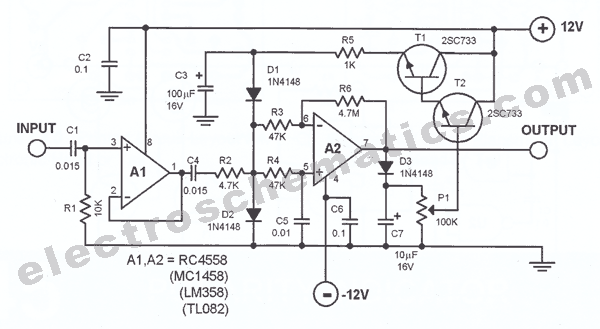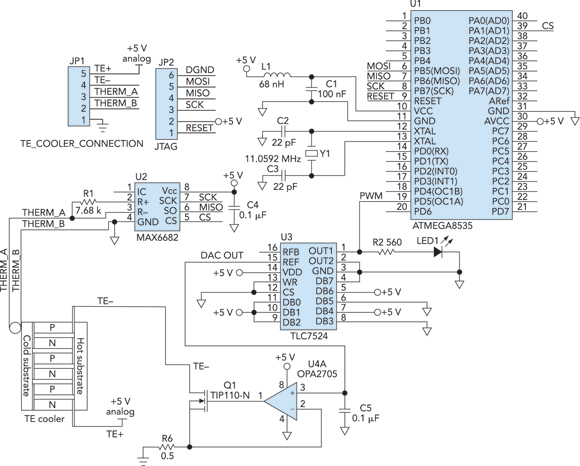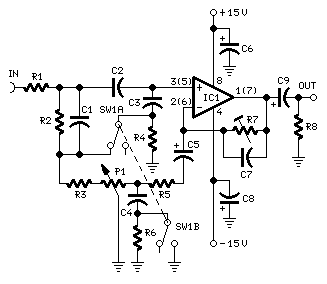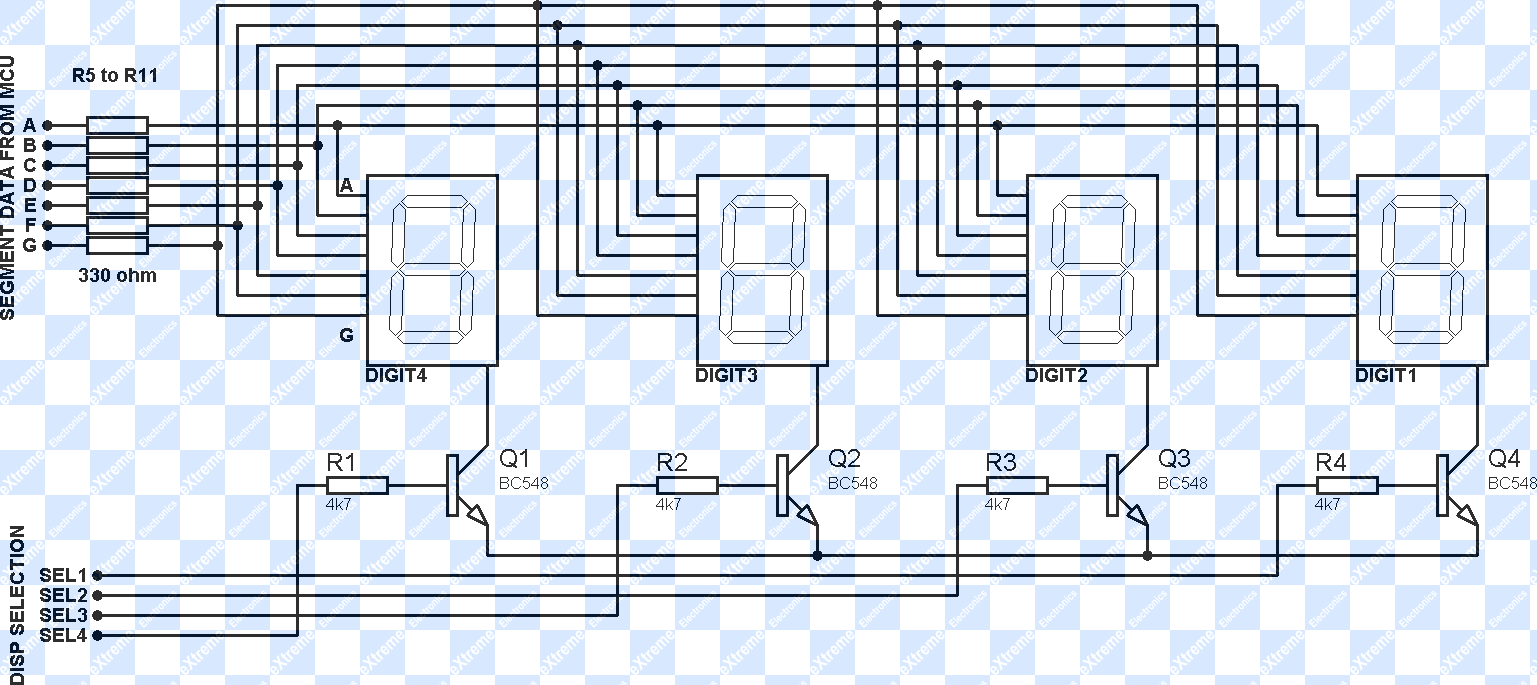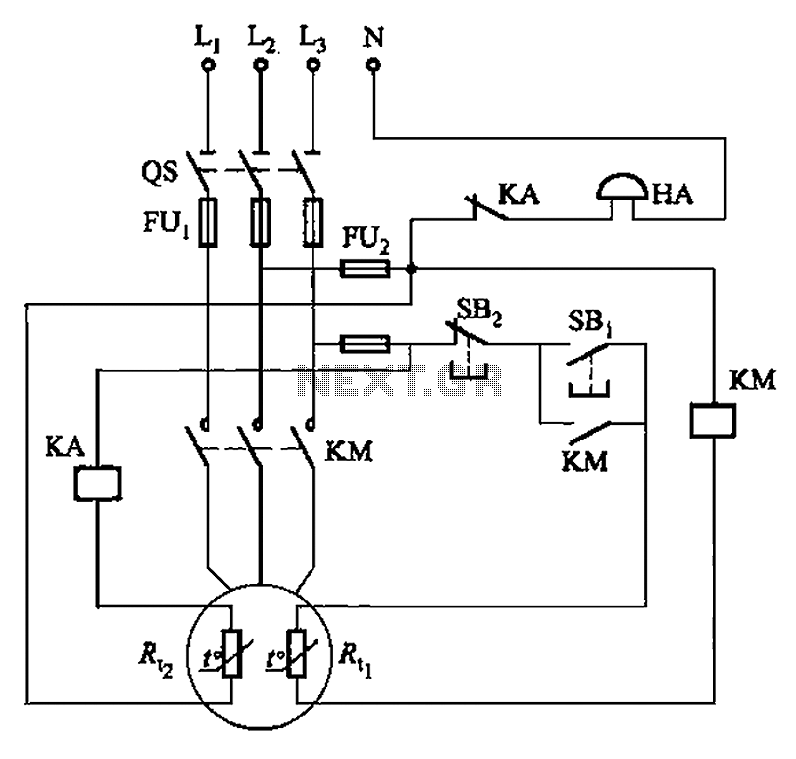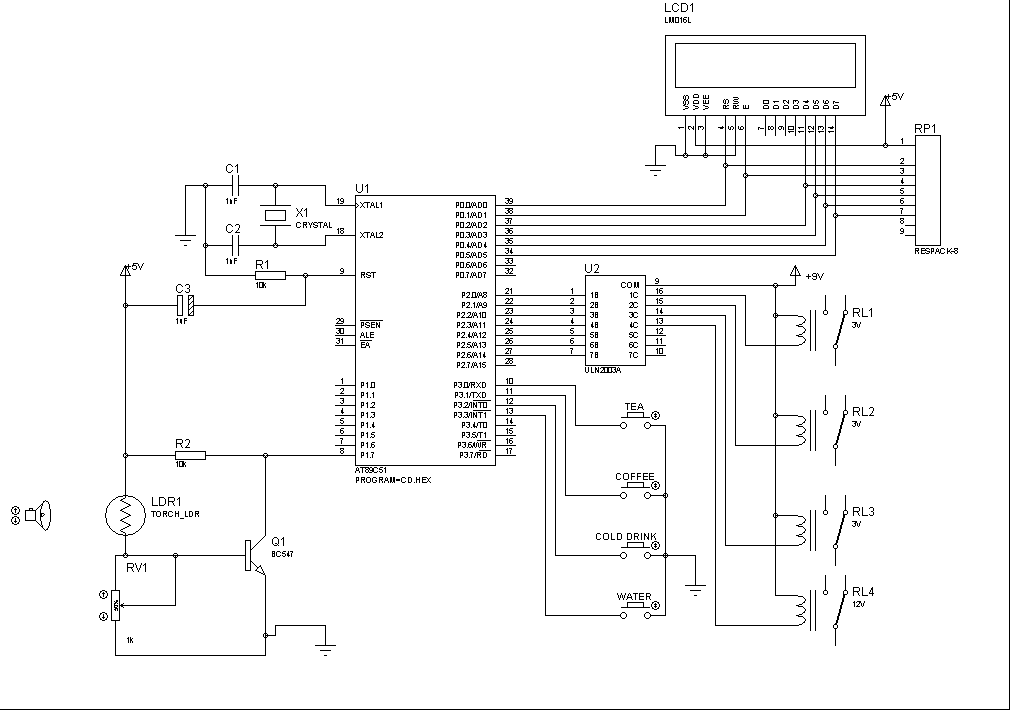
Rolling Shutter Motor Control
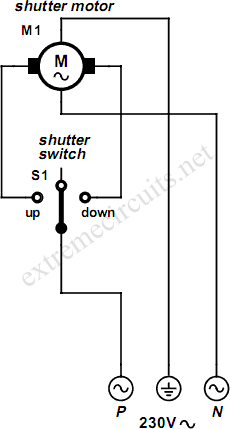
An electrically operated rolling shutter typically features a standard control panel equipped with a three-position switch: up, down, and stop. To automate the opening and closing of the shutter using a time-controlled switch, additional wiring connections are necessary. The controls are illustrated in the schematic labeled "Normal Situation." If automation is desired, the schematic labeled "New Situation" demonstrates how the shutter can be automated with a timer. The only method to ascertain the actual schematic of the control circuit is to open the control box and use an ohmmeter, along with pencil and paper, to examine and sketch the circuit. It is essential to ensure that the power is turned off before proceeding. A 230-V relay (with both the contacts and the coil rated for 230 VAC) should be connected to the timer. The changeover switch between automatic and manual control must also be rated for 230 VAC to ensure user safety. Ideally, the relay and switch should be housed in a plastic mains adapter enclosure equipped with a built-in plug that connects to the timer. Prior verification of fit is advisable. The manual/automatic switch design guarantees fail-safe operation, eliminating potential misunderstandings. This switch prevents conflicting commands, which could lead to hazardous situations, such as when the shutter is being automatically raised while being manually lowered simultaneously.
The electrically operated rolling shutter system is designed to provide both manual and automated control, enhancing user convenience and safety. The three-position switch allows users to manually operate the shutter with ease, selecting either the up or down position or stopping the movement as needed. For automated operation, the integration of a timer introduces a level of sophistication that enables the shutter to open and close at predetermined intervals.
To implement the automation feature, it is crucial to establish a proper wiring configuration. The control circuit should be carefully examined using an ohmmeter, ensuring all connections are secure and reliable. The 230-V relay serves as the critical component that interfaces between the timer and the shutter motor, allowing for controlled operation based on the timer's settings. The relay must be rated appropriately to handle the voltage and current requirements of the shutter motor, ensuring reliable performance.
The changeover switch functions as a safety mechanism, enabling users to switch between manual and automatic modes without risk. This is particularly important in preventing conflicting commands that could arise if both modes are activated simultaneously. The design of the control circuit should prioritize user safety, using components that are rated for the appropriate voltage and housed in a suitable enclosure to prevent accidental contact with live parts.
Overall, the integration of a timer with an electrically operated rolling shutter provides a practical solution for automated control, ensuring convenience while maintaining a high standard of safety. Proper installation and adherence to electrical standards are essential for the successful operation of the system.An electrically operated rolling shutter usually has a standard control panel with a three-position switch: up, down and stop. If you would like to automate the opening and closing with a time controlled switch, a few additional wires will have to be connected.
Typically, the controls are implemented as indicated in the schematic Normal Situation` . If this is indeed the case, then you can see in New Situation` how the shutter can be automated with a timer. There is only one method to determine the actual schematic of your control circuit, and that is to open the control box and using an ohmmeter, pencil and paper to check out and draw the circuit.
Make sure you turn the power offrst though! Connect a 230-V relay (with both the contacts and the coil rated 230 VAC) to the timer. The changeover switch between automatic and manual control needs to be rated 230 VAC as well and may not be a hazard for the user. The relay and switch are preferably fitted in a plastic mains adapter enclosure with built-in plug, which is plugged into the timer.
It is a good idea to check first if this will actuallyt. Because of the manual/automatic-switch, the operation is completely fail-safe and misunderstandings are out of the question. The switch prevents the issue of conflicting commands (with disastrous consequences) when, for example, the shutter is being automatically raised and manually lowered at the same time.
🔗 External reference
The electrically operated rolling shutter system is designed to provide both manual and automated control, enhancing user convenience and safety. The three-position switch allows users to manually operate the shutter with ease, selecting either the up or down position or stopping the movement as needed. For automated operation, the integration of a timer introduces a level of sophistication that enables the shutter to open and close at predetermined intervals.
To implement the automation feature, it is crucial to establish a proper wiring configuration. The control circuit should be carefully examined using an ohmmeter, ensuring all connections are secure and reliable. The 230-V relay serves as the critical component that interfaces between the timer and the shutter motor, allowing for controlled operation based on the timer's settings. The relay must be rated appropriately to handle the voltage and current requirements of the shutter motor, ensuring reliable performance.
The changeover switch functions as a safety mechanism, enabling users to switch between manual and automatic modes without risk. This is particularly important in preventing conflicting commands that could arise if both modes are activated simultaneously. The design of the control circuit should prioritize user safety, using components that are rated for the appropriate voltage and housed in a suitable enclosure to prevent accidental contact with live parts.
Overall, the integration of a timer with an electrically operated rolling shutter provides a practical solution for automated control, ensuring convenience while maintaining a high standard of safety. Proper installation and adherence to electrical standards are essential for the successful operation of the system.An electrically operated rolling shutter usually has a standard control panel with a three-position switch: up, down and stop. If you would like to automate the opening and closing with a time controlled switch, a few additional wires will have to be connected.
Typically, the controls are implemented as indicated in the schematic Normal Situation` . If this is indeed the case, then you can see in New Situation` how the shutter can be automated with a timer. There is only one method to determine the actual schematic of your control circuit, and that is to open the control box and using an ohmmeter, pencil and paper to check out and draw the circuit.
Make sure you turn the power offrst though! Connect a 230-V relay (with both the contacts and the coil rated 230 VAC) to the timer. The changeover switch between automatic and manual control needs to be rated 230 VAC as well and may not be a hazard for the user. The relay and switch are preferably fitted in a plastic mains adapter enclosure with built-in plug, which is plugged into the timer.
It is a good idea to check first if this will actuallyt. Because of the manual/automatic-switch, the operation is completely fail-safe and misunderstandings are out of the question. The switch prevents the issue of conflicting commands (with disastrous consequences) when, for example, the shutter is being automatically raised and manually lowered at the same time.
🔗 External reference
